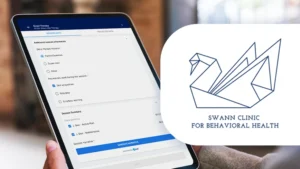There are a number of therapies that are used to support autism spectrum disorder including Applied Behavior Analysis, Speech Therapy, and Occupational Therapy. In this blog, you will receive an overview of Applied Behavior Analysis.
What is Applied Behavior Analysis?
Applied Behavior Analysis (ABA) is a therapy based on the science of learning and behavior that applies our understanding of how behavior works to real situations with the goal to increase behaviors that are helpful and decrease behaviors that are harmful or affect learning.
ABA therapy can target a variety of skills across the lifespan. Language and communication are typically targeted first. Programming in these areas is quickly supplemented by a focus on age-appropriate self-care, social, and “school readiness” skills, such as attention, focus, and memory. As the child grows, their ABA programs will address increasingly complex social, academic, and self-care skills. Problematic behaviors that interfere with health, safety, independence, or happiness can also be addressed through ABA therapy across the lifespan. Behavior analytic plans are based on goals set by the learner, often in collaboration with their families and others who support them.

Board Certified Behavior Analysts (BCBAs) conduct assessments to help define which behaviors or skills should be targeted to meet those goals, then write plans that include specific teaching strategies. Although parents and caregivers will be taught to implement components of those plans, most strategies will be implemented by Registered Behavior Technicians (RBTs). The child’s progress is tracked and measured in all RBT-run teaching sessions.
There are a number of data points that an RBT tracks. Here are a few examples.
-
Frequency (count) measures the number of times a behavior occurs during a session regardless of the session length which can range anywhere from 1-4 hours.
-
Rate measures how many times the behavior occurred per the length of the session. Since session lengths do vary, this helps measure performance more consistently. For example, if a child shows a certain behavior 10 times in a 1-hour session but only 20 times in a 4-hour session, the rate for the latter session has improved.
-
Duration of behavior measures the length of time a behavior occurs. For example, the length of time a child throws a tantrum in a session.
-
Latency measures the time between when you present the instruction to when the child follows the instruction. For example, asking a child to go get their backpack for school and how quickly they respond and follow through on the instruction.
-
Percent Correct measures the percent of trials the child responded correctly on a specified activity. Percent correct is most often used instead of rate when the number of opportunities for the child to respond correctly varies within the same time frame. For example, if the child responded correctly to 33 out of 100 flashcards in the first two-minute session, but in the second two-minute session only 75 flashcards were shown and the child responded correctly to 28, percent correct would show growth and rate would show decline.
-
Trials to Criterion measures how many times the child must attempt a skill before responding correctly. For example, if the child has a goal to say the alphabet, how many times did they have to start over before they said all 26 letters in order.
About CentralReach
CentralReach is the leading provider of Autism and IDD Care Software, providing the only complete, end-to-end software and services platform that helps children and adults diagnosed with autism spectrum disorder (ASD) and related intellectual and developmental disabilities (IDD) - and those who serve them - unlock potential, achieve better outcomes, and live more independent lives. With its roots in Applied Behavior Analysis, the company is revolutionizing how the lifelong journey of autism and IDD care is enabled at home, school, and work with powerful and intuitive solutions purpose-built for each care setting.
Trusted by more than 200,000 professionals globally, CentralReach is committed to ongoing product advancement, market-leading industry expertise, world-class client satisfaction, and support of the autism and IDD community to propel autism and IDD care into a new era of excellence. For more information, please visit CentralReach.com or follow us on LinkedIn and Facebook.
Media Contact:
CentralReach
pr@centralreach.com






